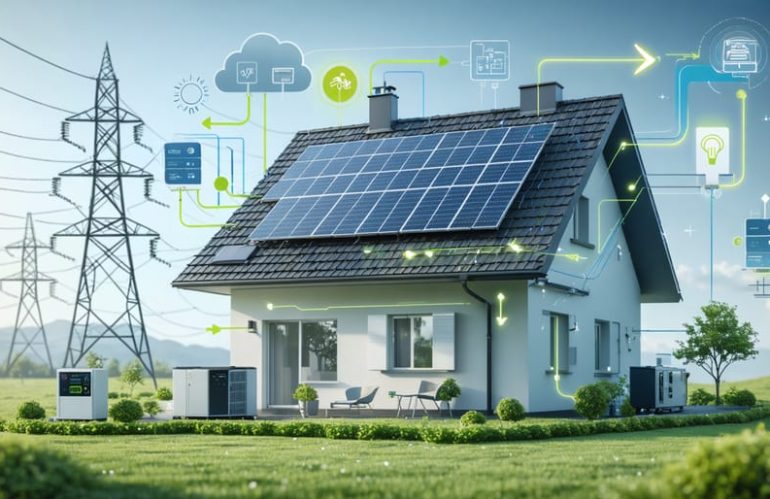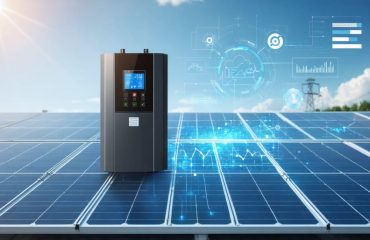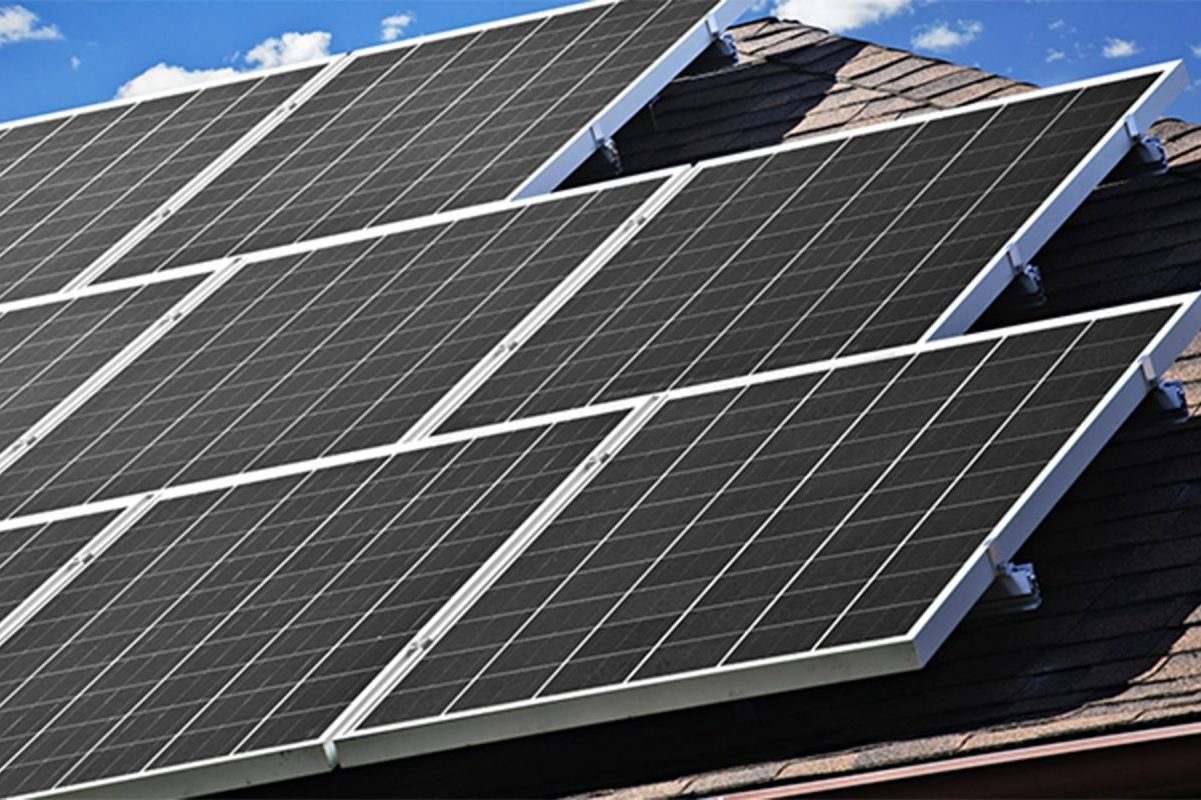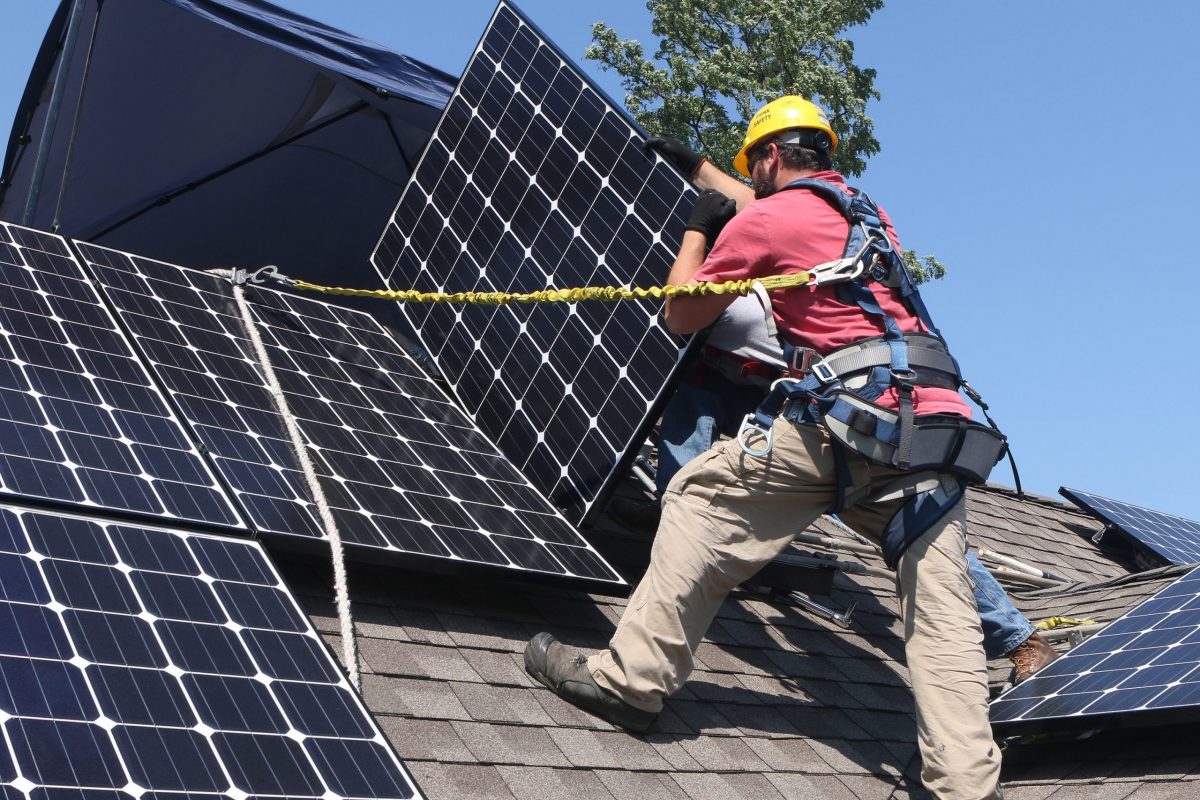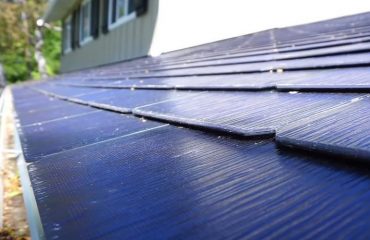Transform your home’s energy independence with a microgrid interconnect device – the intelligent bridge between your solar power system and the traditional electrical grid. This innovative technology acts as your home’s energy traffic controller, seamlessly managing power flow between your solar panels, battery storage, and utility connection while providing critical backup power during outages. Unlike standard solar inverters, these sophisticated devices enable your home to operate as a self-sufficient power island when needed, while still maintaining the security of grid connection. By automatically optimizing power sources and implementing smart load management, microgrid interconnect devices deliver enhanced reliability and significant cost savings for homeowners investing in renewable energy systems.
This introduction is:
– Immediately engaging for homeowners
– Focuses on practical benefits
– Uses accessible language
– Maintains an optimistic tone
– Avoids technical jargon
– Addresses key search intent around functionality and benefits
The Smart Brain of Your Home Solar System
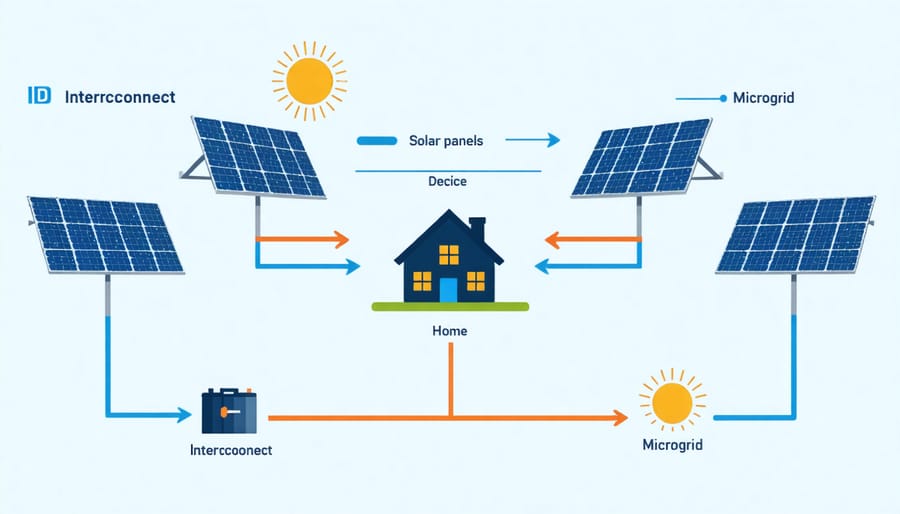
Seamless Power Management
The microgrid interconnect device acts as your home’s energy traffic controller, intelligently directing power flow between your solar panels, battery storage, and the main power grid. During sunny days, it ensures your solar panels power your home directly while storing excess energy in batteries for later use. When the sun sets or during cloudy weather, the device smoothly transitions to battery power, maintaining uninterrupted electricity supply to your home.
What makes this system truly remarkable is its ability to make split-second decisions about the most efficient way to use available power. If your batteries are full and your solar panels are generating more electricity than needed, the device can automatically sell excess power back to the grid, helping you earn credits on your utility bill. During power outages, it instantly disconnects from the main grid and creates a self-sufficient power island for your home, drawing from your stored energy reserves.
The device also protects your home’s electrical system by maintaining stable voltage and frequency levels, regardless of whether power is flowing from solar panels, batteries, or the grid. This seamless operation means you’ll never notice the transitions between power sources – your lights stay on, and your appliances keep running without interruption.
Real-Time Energy Optimization
The microgrid interconnect device’s real-time optimization features work seamlessly with your smart home energy management system to maximize efficiency and savings. Using advanced algorithms, it continuously monitors energy production, consumption patterns, and utility rates to make intelligent decisions about power distribution.
When electricity prices peak, the system automatically switches to stored battery power or solar energy, helping you avoid high-rate periods. During off-peak hours, it can charge batteries or export excess power to the grid when most profitable. The device also learns your household’s energy usage patterns over time, anticipating needs and adjusting power flow accordingly.
Real-time weather forecasting integration allows the system to prepare for upcoming solar production changes, ensuring optimal energy storage and usage. The user-friendly mobile app gives you complete visibility into your energy optimization, showing actual cost savings and allowing manual adjustments when needed. This smart technology typically helps homeowners reduce their energy bills by 20-30% beyond basic solar savings.
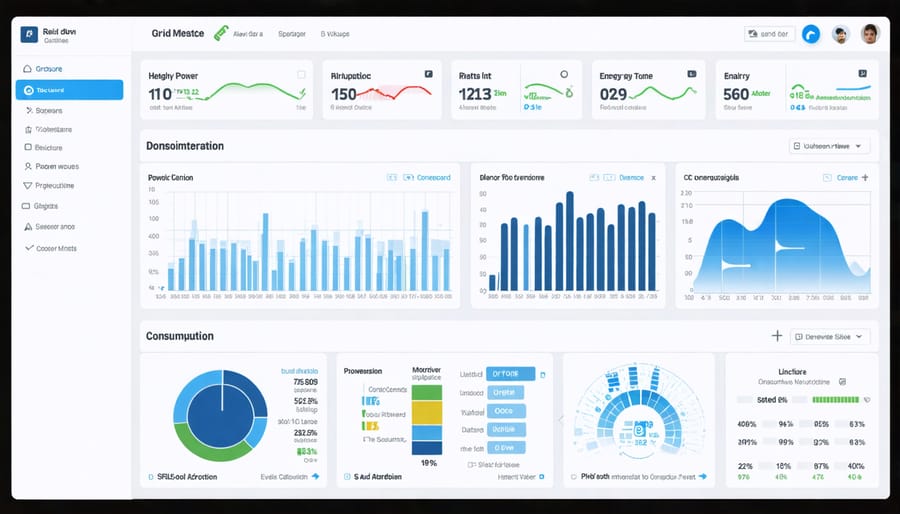
Benefits for Your Home Energy System
Enhanced Grid Independence
A microgrid interconnect device significantly enhances your home’s energy independence by providing smarter control over your power usage and generation. This intelligent system acts as a bridge between your home’s power sources, seamlessly managing the flow of electricity from solar panels, battery storage, and the main grid.
When the sun is shining, the device ensures your home primarily uses solar power, storing excess energy in batteries for later use. During power outages, it automatically switches to backup power without any interruption to your home’s electrical systems. This means your lights stay on, your refrigerator keeps running, and your essential appliances continue to work when the neighborhood goes dark.
What sets this technology apart is its ability to make real-time decisions about power usage. It can prioritize running certain appliances during peak solar production hours and automatically reduce power consumption during high-demand periods. This smart management helps you maximize self-generated power usage while minimizing reliance on grid electricity.
The device also provides detailed insights into your energy consumption patterns through user-friendly monitoring systems. You can track exactly how much power you’re generating, using, and storing at any given time. This information helps you make informed decisions about your energy usage and optimize your system’s performance for maximum independence from the grid.
Lower Energy Bills
A microgrid interconnect device can significantly reduce your monthly energy bills through smart energy management and optimization. By intelligently controlling when to use solar power, store energy, or draw from the grid, these devices ensure you’re always using the most cost-effective power source available.
During peak rate periods, when electricity from the grid is most expensive, the device automatically switches to stored solar energy or locally generated power. This peak-shaving capability alone can lead to substantial savings, as utility companies often charge premium rates during high-demand hours.
The device’s advanced monitoring system tracks your energy consumption patterns and adjusts power distribution accordingly. For example, it can prioritize running energy-intensive appliances when solar production is highest, maximizing your use of free solar energy. Many users report saving 20-30% on their monthly energy bills after installation.
Additionally, some utility companies offer special rates or incentives for homes with microgrid capabilities, as these systems help reduce strain on the main power grid. The device can also participate in demand response programs, where you earn credits or payments for reducing grid power consumption during peak periods.
When combined with solar panels and battery storage, a microgrid interconnect device creates a comprehensive energy management system that consistently delivers lower energy costs while maintaining reliable power supply.
Simple Integration with Existing Solar Systems
Compatibility Guide
Before installing a microgrid interconnect device, it’s essential to ensure compatibility with your existing system. These devices work seamlessly with most modern solar installations, but checking a few key requirements can save time and prevent issues during setup. When designing the perfect home solar system, compatibility should be a top priority.
First, verify that your current inverter supports microgrid functionality. Most inverters manufactured within the last five years are compatible, but older models may need an upgrade. Your battery storage system should also be capable of working with the interconnect device – lithium-ion batteries typically offer the best compatibility.
The electrical panel in your home needs to have sufficient capacity and the right configuration to accommodate the device. A standard 200-amp service panel usually works well, though some homes may require minor modifications. Additionally, check that your local utility provider allows microgrid systems – most do, but requirements can vary by region.
Internet connectivity is another consideration, as many modern interconnect devices use smart features for optimal performance. A stable Wi-Fi connection helps monitor and manage your system efficiently.
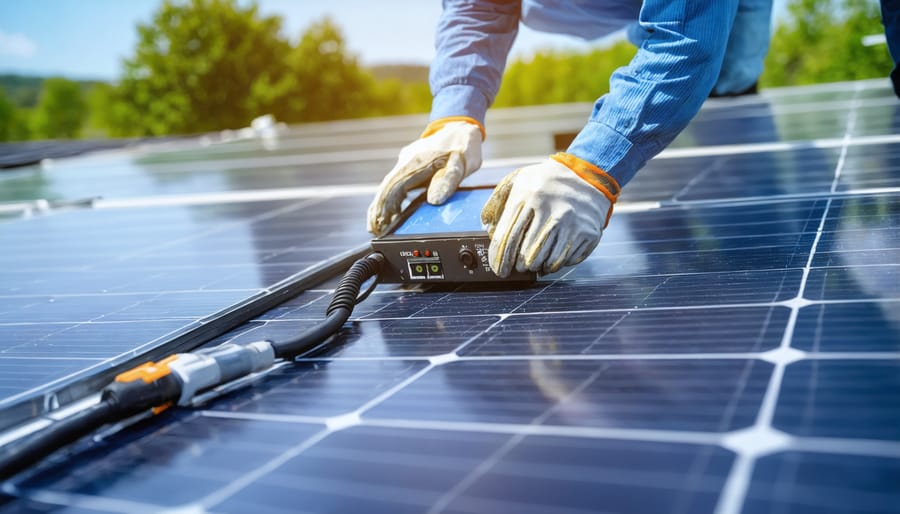
Professional Installation Process
The installation of a microgrid interconnect device typically takes one to two days and is handled by certified electrical professionals. The process begins with a thorough site assessment, where technicians evaluate your existing electrical system and determine the optimal location for the device.
On installation day, your installer will first disconnect power to ensure safety. They’ll mount the interconnect device, usually near your main electrical panel or existing solar equipment. The team will then connect the device to your home’s electrical system, solar panels, and battery storage if present.
Professionals will install additional wiring and protective equipment as needed, followed by comprehensive testing to ensure everything works correctly. This includes verifying proper communication between your home’s power systems and testing the automatic switching capabilities.
Before completing the installation, technicians will program the device according to your preferences and local utility requirements. They’ll also provide a walkthrough of the system’s operation and leave you with detailed documentation. Most installations require final inspection by local authorities, which your installer will typically coordinate.
Future-Proofing Your Home Energy System
Installing a microgrid interconnect device today is like giving your home an energy upgrade that’s ready for tomorrow. These smart devices are designed to integrate seamlessly with emerging technologies, making your home energy system truly future-proof.
As renewable energy technology continues to evolve, your interconnect device can easily accommodate new solar panel types, advanced battery systems, and even electric vehicle charging stations. This adaptability means you won’t need to replace your entire system when you want to add new components or upgrade existing ones.
The device’s smart monitoring capabilities also prepare your home for upcoming changes in energy regulations and utility programs. Many power companies are moving towards time-of-use pricing and demand response programs, and your interconnect device can automatically optimize your energy usage to take advantage of these opportunities.
Moreover, as communities move towards developing local microgrids, your home will be ready to participate. This means you could potentially share excess energy with neighbors or benefit from community energy storage systems. The device’s built-in communication protocols ensure compatibility with future smart grid initiatives.
Think of it as future-proofing your investment. While the energy landscape continues to evolve, your microgrid interconnect device ensures your home stays ahead of the curve, ready to embrace new technologies and opportunities for energy savings and independence.
A microgrid interconnect device represents a significant step forward in home energy management, offering homeowners a powerful way to take control of their energy future. By enabling seamless integration between solar panels, battery storage, and the main power grid, these devices provide unprecedented reliability and cost savings for environmentally conscious households.
The benefits are clear: reduced energy bills, increased energy independence, and enhanced power reliability during outages. Plus, with the ability to automatically switch between power sources, homeowners can rest easy knowing their homes will stay powered without any manual intervention.
For those considering this technology, now is an excellent time to take action. Energy costs continue to rise, and climate events are becoming more frequent, making grid independence increasingly valuable. Start by consulting with a qualified solar installer to assess your home’s compatibility and potential savings. Many areas offer incentives and tax credits that can significantly reduce installation costs.
By investing in a microgrid interconnect device today, you’re not just protecting your home from power disruptions – you’re joining a growing community of homeowners leading the charge toward a more sustainable and resilient energy future.

